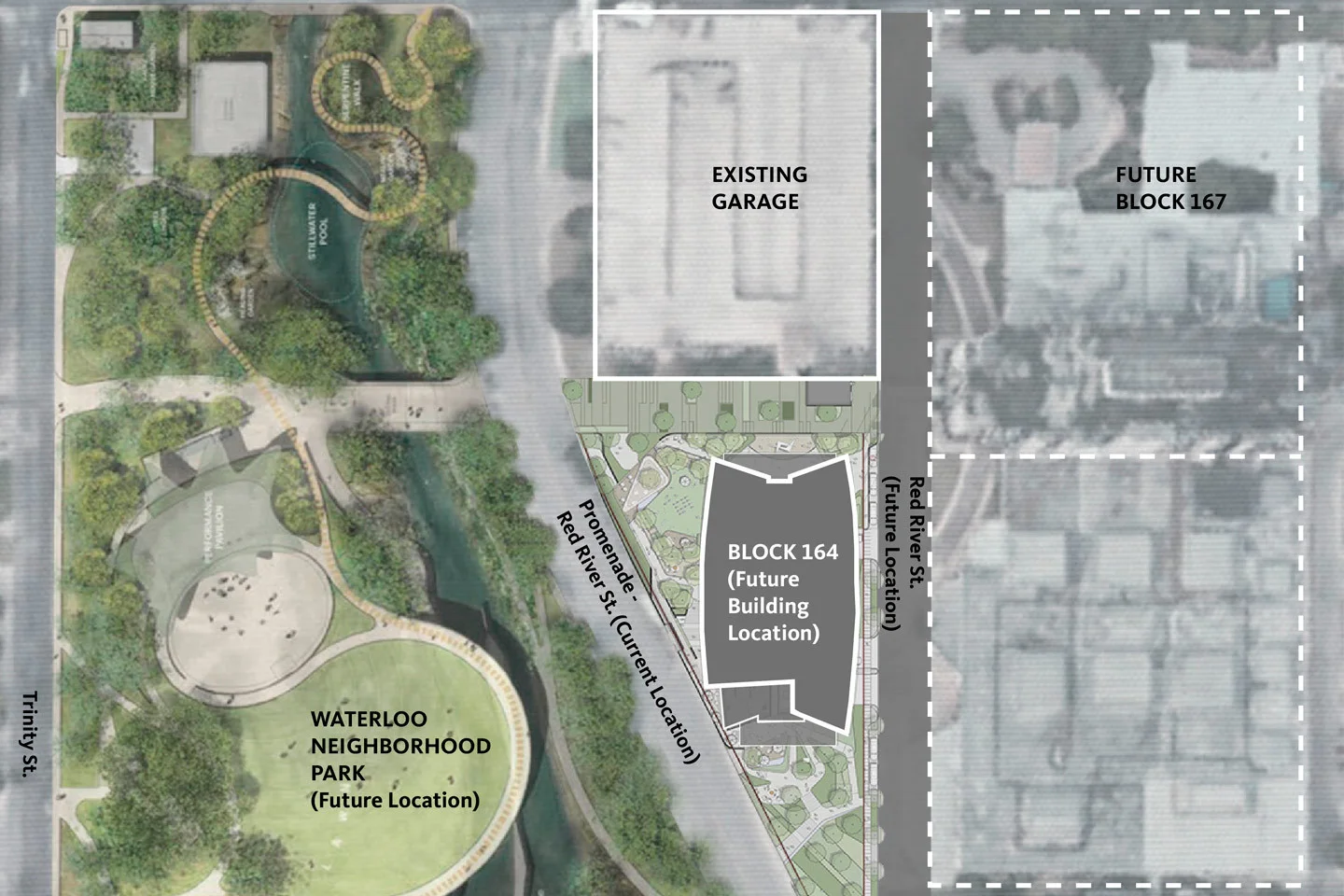Austin’s Innovation District is emerging! The Flagship building will be completed by 2022. Take a first look.
AUSTIN, Texas — Demolition will begin soon of a vacant professional office building near the former University Medical Center Brackenridge — a major milestone in the long-term redevelopment of Central Health’s downtown property that will leverage a partnership with The University of Texas at Austin to create new revenue for local health care needs.
The 2033 Higher Education Development Foundation, a local nonprofit created to benefit UT Austin, is Central Health’s first developer to advance a redevelopment project. The foundation’s 99-year ground lease with Central Health for Blocks 164 and 167 will generate revenue to fund health care for people with low incomes in Travis County — and help pay to expand services to underserved areas.
Photo rendering of the forthcoming office building on a site near the former University Medical Center Brackenridge
Central Health will receive more than $460 million over the life of the ground lease for Blocks 164 and 167; the first payment for Block 164 was made in March. The ground lease provides for annual escalations as well as market rate adjustments throughout the term of the lease.
“This redevelopment effort is part of a health care transformation taking place in Austin based on an unprecedented partnership between a local health district, a research university and a hospital system,” said UT Austin President Gregory L. Fenves. “It’s unlike anything else taking place across the nation, and today is a milestone for our partnership.”
The work includes demolition on Block 164, a 1.2-acre site along Red River Street where an existing three-story building will be replaced by a new 17-story office building. It will be the flagship of Austin’s emerging Innovation District by Capital City Innovation, an initiative of Central Health, UT Austin and Ascension Seton, with support from the Downtown Austin Alliance and Opportunity Austin. Companies, nonprofits and community groups will combine in the district with the goal of improving health care and creating access to jobs.
Map rendering of the forthcoming office building on a site near the former University Medical Center Brackenridge
The new structure is expected to be completed by the beginning of 2022. In addition to providing a home for transformative health care efforts, this project includes the proposed straightening of Red River Street through the downtown property and will increase public access to Waller Creek. The building will house some of UT’s Dell Medical School operations as well as future strategic partners, who will team up with faculty members and students to rethink health and health care.
“It’s exciting to see activity on Central Health’s property because it means we’ll soon be generating even more lease revenue,” said Guadalupe Zamora, M.D., a long-time Austin physician and Central Health board chairperson. “We’re redeveloping this property with the sole purpose of funding our mission of caring for people with low income. We’re grateful to have partners like the 2033 Fund, Dell Med and UT Austin to make this happen.”
Photo rendering of the forthcoming office building on a site near the former University Medical Center Brackenridge
Central Health, Travis County’s health care district, owns the 14.3-acre property that was the former University Medical Center Brackenridge. That facility closed in 2017 when Ascension Seton, another strategic partner in improving local health care, moved hospital operations across the street to the Dell Seton Medical Center at The University of Texas, which is adjacent to the medical school.
Our work is made possible by our founders and supporting sponsors. See who is fueling Austin’s Innovation





